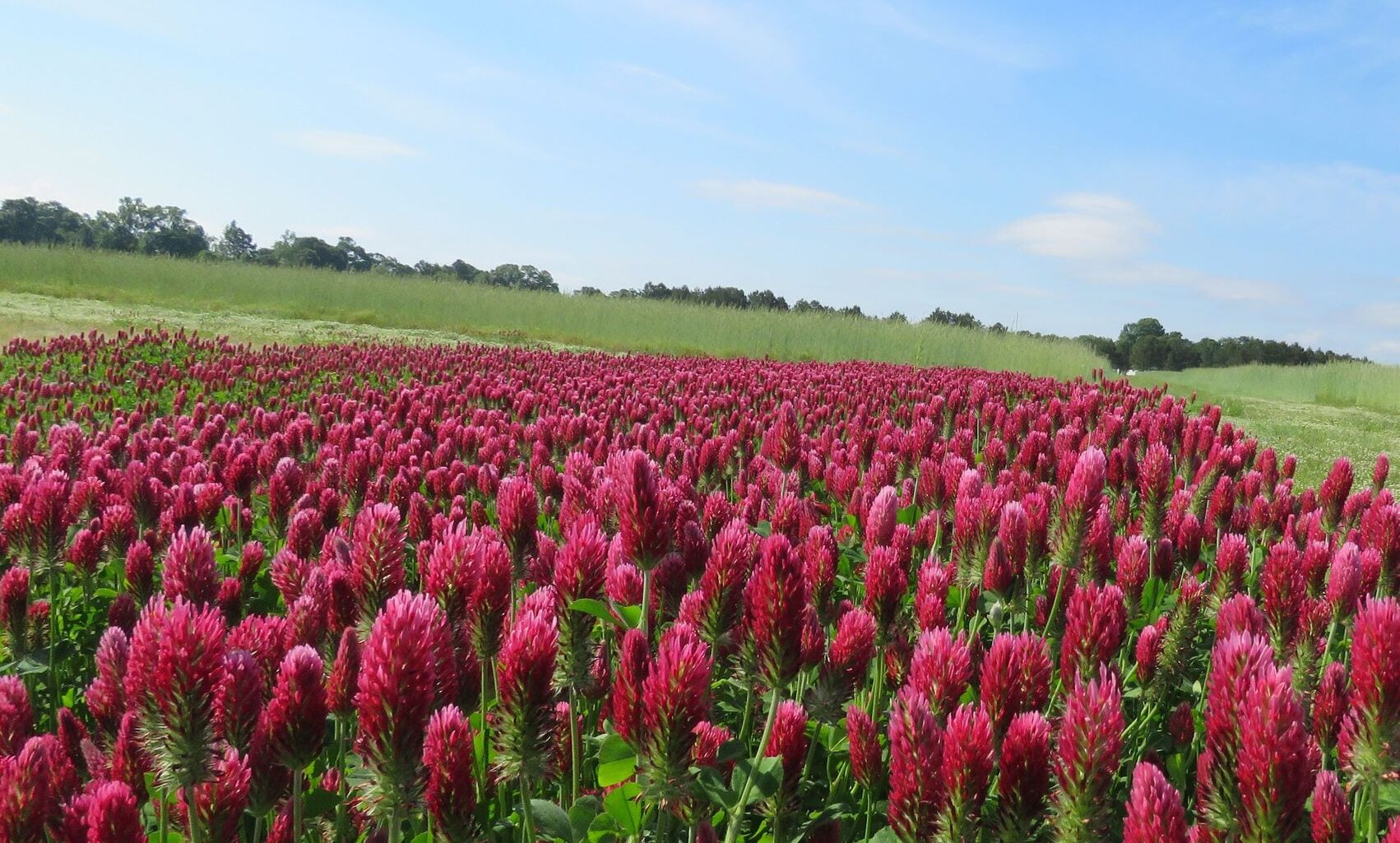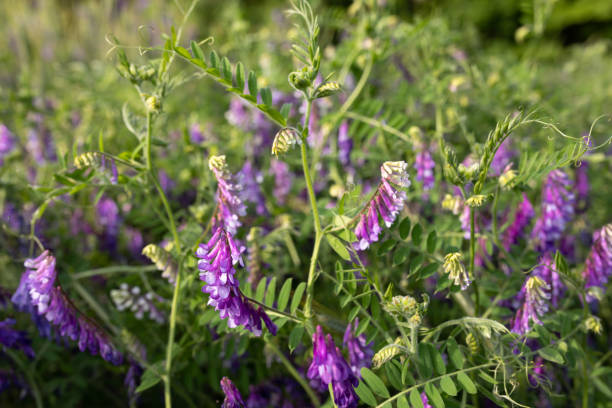TheFarmersDigest
The Farmers Digest
May 21, 2025

Author
Chris Pigge

Editor
Miles Falk
Choosing the Right Cover Crop: A Practical Selection Guide
If you've spent any time on the cover crop merry-go-round, you know there's no shortage of options spinning before your eyes. Seed catalogs arrive with enough colorful possibilities to make your head spin faster than an unbalanced centrifuge. "Plant this miraculous species and watch your soil transform!" they proclaim. But how do you separate the wheat from the chaff when selecting cover crops for your specific operation?
The truth is, the "perfect" cover crop doesn't exist in isolation—it exists within the context of your farm's unique needs, constraints, and goals. Let's dig into how to make this critical selection, without the need for a PhD in agronomy or a crystal ball.
The Selection Framework: Questions Before Seeds
Before opening a single seed catalog, successful cover croppers take stock of their situation by answering these fundamental questions:
- What's your primary goal? Each farm has different priorities. Are you battling erosion on sloping fields? Trying to fix nitrogen for a hungry corn crop? Breaking up compaction from years of heavy equipment? Suppressing weeds that have gotten out of hand? Identifying your top priorities helps narrow the field considerably.
- What's your timeframe? The window between cash crops often dictates which cover crops will actually have time to establish and deliver benefits. A cover crop that needs 90 days to work its magic isn't much use if you only have 60 days between harvest and planting.
- What are your termination options? Some cover crops winterkill conveniently in northern climates, while others require mechanical or chemical termination. Your available equipment, herbicide program, or organic certification may limit your options.
- What's your soil telling you? Soil tests reveal nutritional deficiencies, while a penetrometer or even a simple shovel can identify compaction layers. Let your soil's needs guide your selection.
- What's your budget? Cover crop seed costs vary widely, from inexpensive cereal rye to pricier multi-species mixes. Being honest about your financial constraints helps prevent "buyer's remorse" when the bill arrives.
The Cover Crop All-Stars: Costs, Benefits, and Requirements
Let's examine some of the most widely used cover crops, understanding that regional adaptations might be necessary for your specific location.
Cereal Rye: The Reliable Workhorse
Typical Cost: $15-25 per acre (50-70 lbs/acre)
Why Choose It: If cover crops had a hall of fame, cereal rye would be the first inductee. This versatile grain establishes quickly even in cool conditions and late plantings, produces substantial biomass, suppresses weeds through both physical competition and natural allelopathic compounds, and develops an extensive root system that prevents erosion while improving soil structure.
Growing Conditions: Cereal rye thrives in a wide range of environments, from sandy soils to clay, and tolerates pH levels from 5.0-8.0. It can be planted from late summer through late fall in most regions, germinating in soil temperatures as low as 34°F. While it prefers well-drained conditions, it handles poor drainage better than many alternatives.
Management Notes: Its vigorous spring growth can challenge timely termination, but this same characteristic makes it excellent for weed suppression. The carbon-to-nitrogen ratio increases as rye matures, potentially temporarily tying up nitrogen when terminated at later growth stages.
Crimson Clover: The Nitrogen Factory

Typical Cost: $25-45 per acre (15-20 lbs/acre)
Why Choose It: This legume beautifies fields with striking crimson blooms while fixing 70-150 pounds of nitrogen per acre when allowed to reach flowering stage. Beyond nitrogen contribution, crimson clover attracts beneficial insects, suppresses weeds effectively once established, and creates a manageable amount of biomass for spring termination.
Growing Conditions: Crimson clover requires earlier planting than cereal rye—typically 6-8 weeks before the first killing frost. It prefers well-drained soils with pH between 5.5-7.0 and doesn't tolerate waterlogged conditions. Proper inoculation with nitrogen-fixing bacteria ensures maximum nitrogen benefits.
Management Notes: Winter survival varies by region and can be inconsistent in northern climates. Spring growth begins earlier than many other legumes, providing good weed suppression while still allowing relatively easy termination.
Hairy Vetch: The Nitrogen Powerhouse
Typical Cost: $30-60 per acre (15-25 lbs/acre)
Why Choose It: When maximum nitrogen fixation is the goal, hairy vetch delivers, potentially providing 100-200 pounds per acre under optimal conditions. Its vining growth habit creates dense cover that smothers weeds, while its root system improves soil aggregation. When paired with a grass like cereal rye, it creates a complementary mix that maximizes benefits.
Growing Conditions: Plant 3-6 weeks before the first killing frost to ensure good establishment. Hairy vetch adapts to various soil types but prefers well-drained loamy soils with pH 6.0-7.0. Proper inoculation is critical for nitrogen fixation.
Management Notes: Spring termination timing significantly affects nitrogen release patterns. The vining growth habit can create challenges with some planting equipment, sometimes requiring roller-crimping or other specialized termination approaches. Many farmers plant vetch in mixtures to provide physical support for its climbing growth habit.
Oats: The Winterkill Wonder
Typical Cost: $15-30 per acre (60-100 lbs/acre)
Why Choose It: In northern climates, oats provide the benefits of a grass cover crop—rapid establishment, good biomass production, erosion protection—with the convenience of winterkill eliminating the need for spring termination. This characteristic makes oats particularly valuable in operations with limited springtime labor or equipment availability.
Growing Conditions: Plant at least 6-8 weeks before the first killing frost to ensure adequate growth before winterkill. Oats perform best on well-drained loamy soils with pH 5.5-7.5 but adapt reasonably well to various conditions. Seed-to-soil contact improves germination significantly.
Management Notes: While winterkill eliminates termination concerns, it also means biomass decomposes earlier, potentially reducing spring erosion protection compared to overwintering species. Many growers combine oats with a legume like crimson clover to maximize benefits.
Daikon/Forage Radish: The Compaction Crusher
Typical Cost: $15-40 per acre (6-10 lbs/acre)
Why Choose It: If your soil has compaction layers that make you wince when digging a spade, radishes offer a biological solution. Their aggressive taproot can penetrate compacted layers down to 12-30 inches, creating channels for water infiltration and subsequent crop roots. The rapid fall growth also scavenges nutrients effectively, while winterkill in many regions simplifies spring management.
Growing Conditions: Plant at least 4-6 weeks before the first killing frost, as radishes need adequate time to develop their soil-penetrating taproot. They prefer well-drained soils with pH 6.0-7.5 and respond well to nitrogen availability. Shallow seeding (¼-½ inch) improves emergence.
Management Notes: The decomposing roots create distinct holes in the soil—biological drilling without diesel fuel. In milder winters, they may require termination rather than winterkilling. The pungent smell during decomposition is natural but can be surprising for the uninitiated.
Winter Peas: The Cold-Hardy Legume
Typical Cost: $40-70 per acre (50-80 lbs/acre)
Why Choose It: Winter peas combine excellent nitrogen fixation (potentially 90-150 lbs/acre) with better cold tolerance than many legumes. Their succulent growth decomposes rapidly after termination, releasing nitrogen quickly for spring-planted crops. Winter peas also produce more biomass in cool weather than other legumes.
Growing Conditions: For best results, plant 6-8 weeks before the first killing frost. Winter peas prefer well-drained loam or clay loam soils with pH 6.0-7.0. Proper inoculation ensures effective nitrogen fixation. While more cold-tolerant than some legumes, winter survival varies by variety and region.
Management Notes: The rapid decomposition that makes nitrogen quickly available also means winter peas provide less long-lasting residue for erosion protection. Many farmers pair them with a grass cover crop for more complete benefits.
Buckwheat: The Summer Speed Demon
Typical Cost: $30-50 per acre (50-70 lbs/acre)
Why Choose It: For summer fallow periods, few cover crops can match buckwheat's rapid establishment and flowering—often reaching maturity in just 30-40 days. This quick turnaround makes it valuable for short windows between cash crops. Buckwheat excels at phosphorus scavenging, weed suppression, and pollinator support.
Growing Conditions: Plant when soil temperatures consistently reach 50°F. Buckwheat prefers well-drained soils but tolerates relatively poor fertility and moderately acidic conditions (pH 5.0-7.0). Shallow seeding depth (½-¾ inch) improves emergence.
Management Notes: Timely termination before seed set prevents volunteer buckwheat issues. Its frost sensitivity limits use to frost-free periods. The rapid but relatively short-lived benefits make buckwheat ideal for quick soil improvements in summer gaps.
Multi-Species Mixes: The Symphony Approach
Typical Cost: $35-90 per acre (varies by components)
Why Choose It: Cover crop mixes combine complementary species to deliver multiple benefits simultaneously. These "cocktails" can include combinations of grasses, legumes, brassicas, and other broadleaves carefully selected to maximize functional diversity. Research suggests these diverse plantings may provide greater overall ecosystem services than monocultures.
Growing Conditions: Requirements vary based on mix components. Successful mixes balance species with compatible planting windows, seeding depths, and growth habits. Selecting species adapted to your specific region and planting window is critical.
Management Notes: While more complex to manage than single species, mixes offer insurance—if conditions don't favor one component, others can compensate. Seed costs typically increase with species diversity, though careful formulation can create cost-effective custom blends. Termination timing may require balancing the needs of different components.
Grazing Potential: Many multi-species mixes are specifically designed to serve double-duty as both soil builders and livestock forage. Carefully designed "grazing cocktails" can provide nutritionally balanced forage while still delivering soil health benefits. If livestock integration is on your radar, these mixes deserve special consideration.
Cover Crop Selection by the Numbers
Nitrogen Contribution Potential
Average Biomass Production
Compaction Alleviation
Weed Suppression Capacity
Making Your Selection: A Practical Framework
When the rubber meets the road, how do you actually decide? Consider this approach:
- Begin with your planting window. First eliminate any cover crops that won't reasonably establish in your available timeframe. Even the perfect cover crop species fails if it doesn't have time to grow.
- Match your primary goal with top performers. If nitrogen fixation tops your list, focus on legumes. For erosion control, grasses often excel. For compaction, consider radishes or other deep-rooted options.
- Consider your termination strategy. If spring labor is limited, prioritize species that winterkill or terminate easily with your available equipment.
- Check compatibility with your next cash crop. Some cover crops may have allelopathic effects or create nitrogen immobilization that can impact specific following crops.
- Factor in your budget. If cost constraints are tight, remember that even basic, affordable options like cereal rye provide substantial benefits compared to bare ground.
Starting Small: The Path to Success
Cover crop selection paralysis is real. When faced with too many options, it's easy to delay planting anything while searching for the "perfect" solution. Remember that any reasonable cover crop option will generally outperform bare ground.
Many experienced cover croppers recommend starting with a single species that aligns with your primary goal and available planting window. As you gain experience with management, termination timing, and your soil's response, you can gradually incorporate more diverse approaches.
A practical first-year approach might include:
- Cereal rye after corn going to soybeans (easy to manage, excellent erosion control)
- Crimson clover or hairy vetch before nitrogen-demanding crops like corn
- Oats in northern regions where winterkill simplifies spring management

Conclusion
Cover crop selection doesn't need to be complicated, but it does deserve thoughtful consideration. By aligning your choice with specific goals, practical constraints, and regional conditions, you can select species that deliver meaningful benefits with manageable challenges.
The economics of cover crops merit careful consideration. While seed and establishment costs are upfront, the returns build steadily over time. A well-managed legume cover crop like crimson clover can contribute nitrogen worth $50-100 per acre, reducing fertilizer expenses (University of Georgia Extension, 2018). Cereal rye's weed suppression can lower herbicide needs, offering significant savings in integrated systems (Penn State Extension, 2020). Soil erosion reductions of 60-90% safeguard topsoil, preserving an asset valued at hundreds of dollars per acre (Clark, 2007).
Research highlights that cover crops can reduce irrigation needs by 10-20% through enhanced water infiltration and retention (University of Nebraska-Lincoln Extension, 2021). When paired with livestock, cover crops provide grazing opportunities that minimize reliance on supplemental feed, boosting profitability during key seasons (Clark, 2007). While we'll delve deeper into livestock integration in a future article, many species discussed here excel as both soil enhancers and nutritious forage.
Remember that cover crops represent a biological investment in your soil, not merely an expense. The right cover at the right time can reduce input costs, improve resilience to weather extremes, and enhance the productivity of subsequent cash crops—benefits that combine to improve your operation's bottom line for years to come. While the full economic return often takes 4-8 years to realize, many farmers report measurable benefits within the first two seasons.
As with many farming practices, starting simple and growing in knowledge through direct experience often proves more valuable than waiting for perfect information. Give your soil something living to work with between cash crops, and you'll likely be surprised by how it responds—and ultimately, by how your balance sheet responds too.
References
Penn State Extension. (2020). Cover Crops and Soil Health.
University of Georgia Extension. (2018). Cover Crop Management for Georgia Vegetable Growers.
University of Maryland Extension. (2019). Cover Crops.
University of Nebraska-Lincoln Extension. (2021). Cover Crop Chart.
University of Wisconsin-Madison Extension. (2020). Cover Crops.
Ohio State University Extension. (2020). Cover Crops for Weed Control.
Cornell University Cooperative Extension. (2016). Buckwheat Cover Crop Handbook.